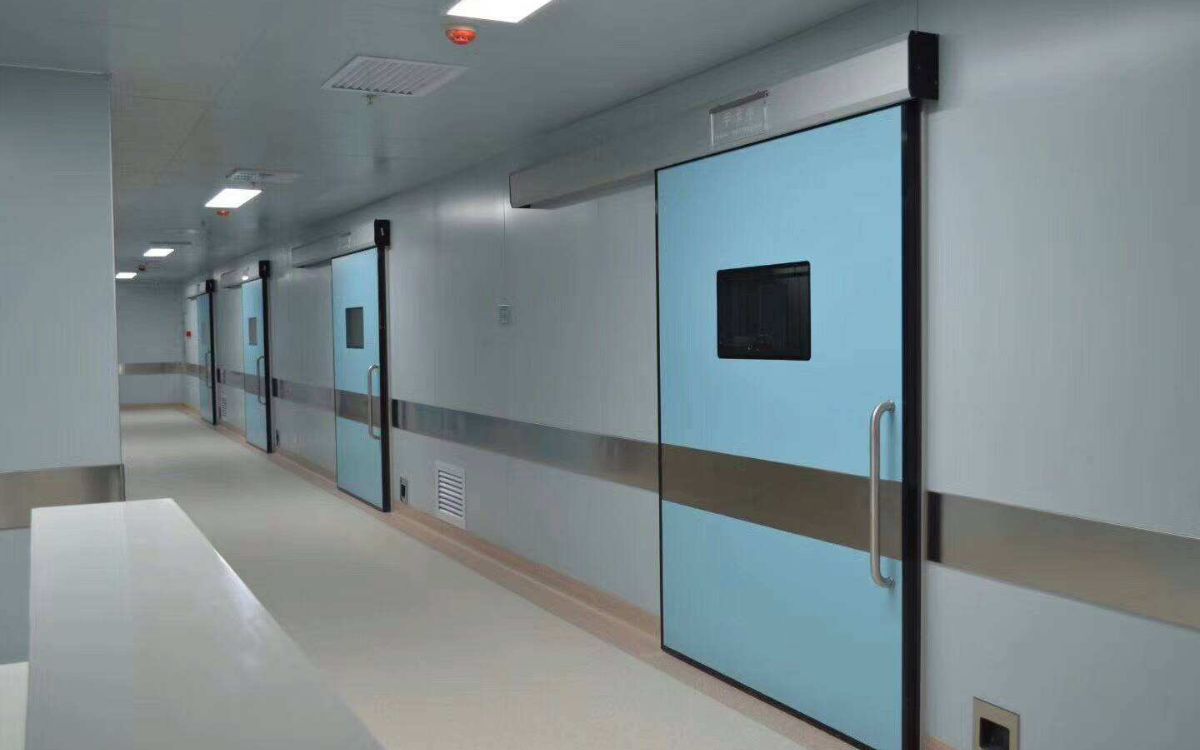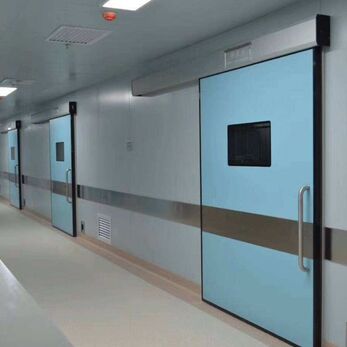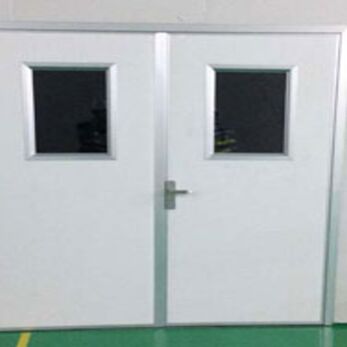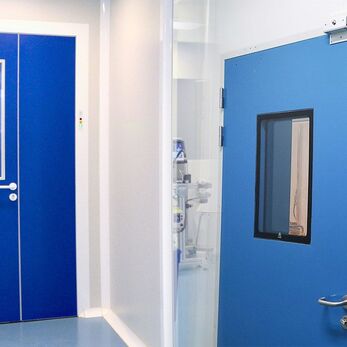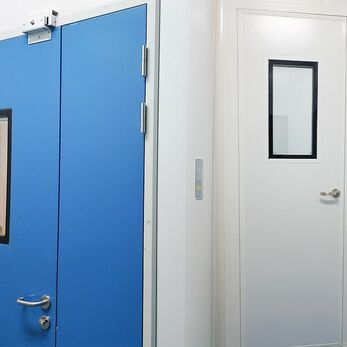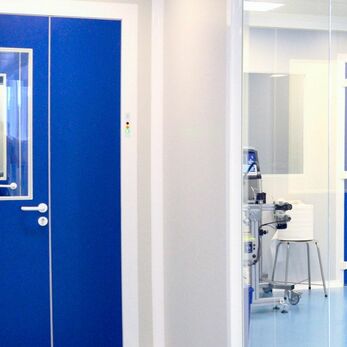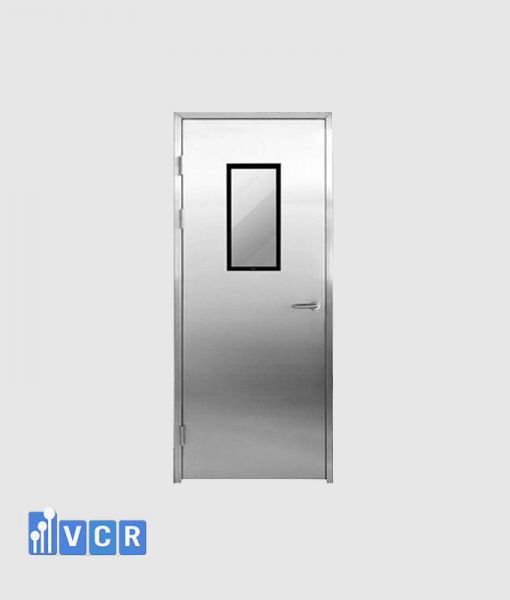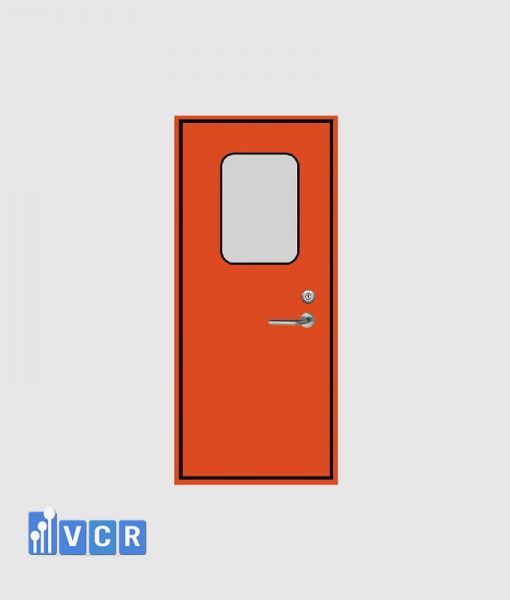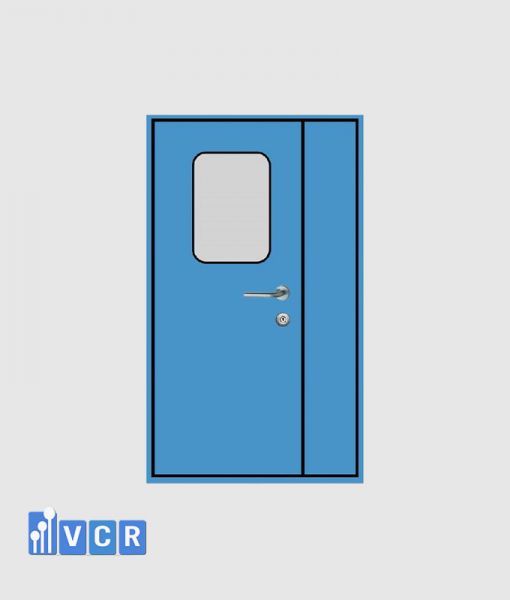X-ray room lead doors are mandatory equipment in X-ray rooms, helping to prevent ionizing radiation from spreading outside. With a special structure made of steel and specialized lead plates, the door ensures safety for personnel, complies with design standards and radiation safety regulations.
- 1. What is an X-ray Lead Door?
- 2. Why Are Lead Doors Mandatory in X-ray Rooms?
- 3. Technical Requirements for X-ray Lead Doors
- 4. Inspection and Acceptance of X-ray Lead Doors
- 5. Practical Applications - Where Are Lead Doors Used?
- 6. Key Considerations When Selecting a Lead Door for Medical Facilities
- 7. Frequently Asked Questions About Lead Doors for X-ray Rooms
- 8. Need Professional Advice on Lead Doors for X-ray Rooms?
1. What is an X-ray Lead Door?
A lead door is a specialized type of door designed to block ionizing radiation, particularly X-rays - a form of radiation capable of penetrating human tissue and thin materials. In X-ray rooms at hospitals, clinics, or diagnostic centers, lead doors are mandatory equipment because they:
- Effectively block radiation to protect staff and the public from exposure.
- Ensure complete sealing to prevent X-rays from leaking outside the controlled area.
- Comply with legal regulations on radiation safety and X-ray room design standards.
2. Why Are Lead Doors Mandatory in X-ray Rooms?
Installing a lead door is not optional; it is a legal requirement under both international and national radiation safety standards (e.g., QCVN 5:2010/BKHCN). Key reasons include:
1. Protecting personnel and the public from radiation exposure
X-rays are ionizing radiation that can damage DNA and cells after long-term exposure.
Lead doors minimize the risk of X-ray leakage beyond the room.
2. Compliance with radiation safety regulations
All X-ray rooms must be inspected and approved for safety before operation.
Lead doors must meet shielding standards based on the X-ray generator’s power output.
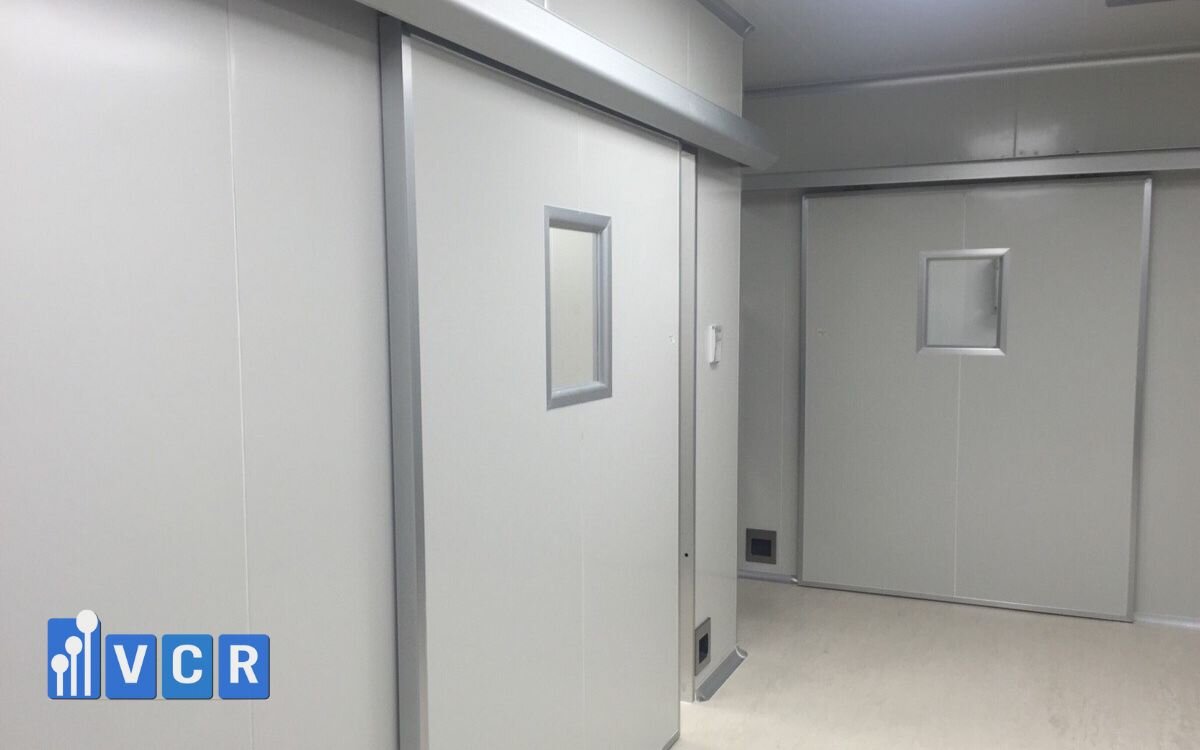
3. Preventing radiation leakage and diagnostic errors
Leaking X-rays not only pose health risks but can also interfere with imaging quality and diagnostic accuracy.
4. Integral part of a complete radiation shielding system
Along with walls, floors, and lead glass, doors are the most common weak points in shielding design.
If not properly built, the door becomes the primary source of radiation leakage.
See more: Supplier of clean room doors meeting GMP standards according to ISO 14644
3. Technical Requirements for X-ray Lead Doors
A proper lead door must meet a set of engineering and safety criteria to ensure effective radiation shielding and long-term performance according to the X-ray equipment’s output.
|
Technical Criteria |
Detailed Requirements |
|
Lead shielding layer |
Solid lead sheet ≥ 1.5 mm (can be 2-3 mm depending on machine power) |
|
Total door thickness |
40-70 mm (including core, lead layer, and finishing surface) |
|
Surface material |
Stainless steel (Inox 304), anodized aluminum, or HPL laminate - depending on hygiene level |
|
Internal structure |
High-density engineered wood core with solid lead sheets laminated inside |
|
Door types |
- Swing door (single or double leaf) - Automatic sliding door (for high-traffic areas) |
|
Sealing performance |
Equipped with radiation-proof and dust-proof gaskets for complete sealing |
|
Frame construction |
Galvanized steel or stainless steel, flush-fitted to lead-lined wall without gaps |
|
Applicable standards |
- QCVN 5:2010/BKHCN (Radiation Safety) - TCVN 7303-1:2008 (Medical X-ray Standards) |
Key Technical Notes
- Lead sheet uniformity: Must be continuous, with no joints, cracks, or oxidation.
- Wall-door continuity: The door’s lead thickness must match or exceed that of the wall.
- Smooth and secure operation: Despite being heavy, doors must open and close smoothly.
- Optional integrations: Magnetic locks, radiation warning lights, presence sensors, and interlocks.
See more: 10 Essential Precautions for Safe and Optimal Use of Cleanroom Automatic Doors
4. Inspection and Acceptance of X-ray Lead Doors
Inspection is mandatory before an X-ray room can be put into service. It verifies the door’s radiation shielding performance and mechanical integrity.
1. Check lead layer thickness and integrity
- Tools: Radiation detector or manual thickness verification.
- Objective: Confirm that the lead layer meets design specifications (e.g., 1.5 mm or 2 mm).
- Requirements: Lead sheets must be intact, seamless, and free from corrosion or deformation.
2. Measure X-ray leakage using specialized instruments
- Timing: Before initial operation and every 6-12 months thereafter.
- Devices: Portable radiation detector or ionization chamber.
- Test points:
- Door frame and hinge areas
- Joints between the door and wall
- Any penetrations or openings
- Pass criteria: Leakage level < 1 mSv/year (per QCVN 5:2010/BKHCN).
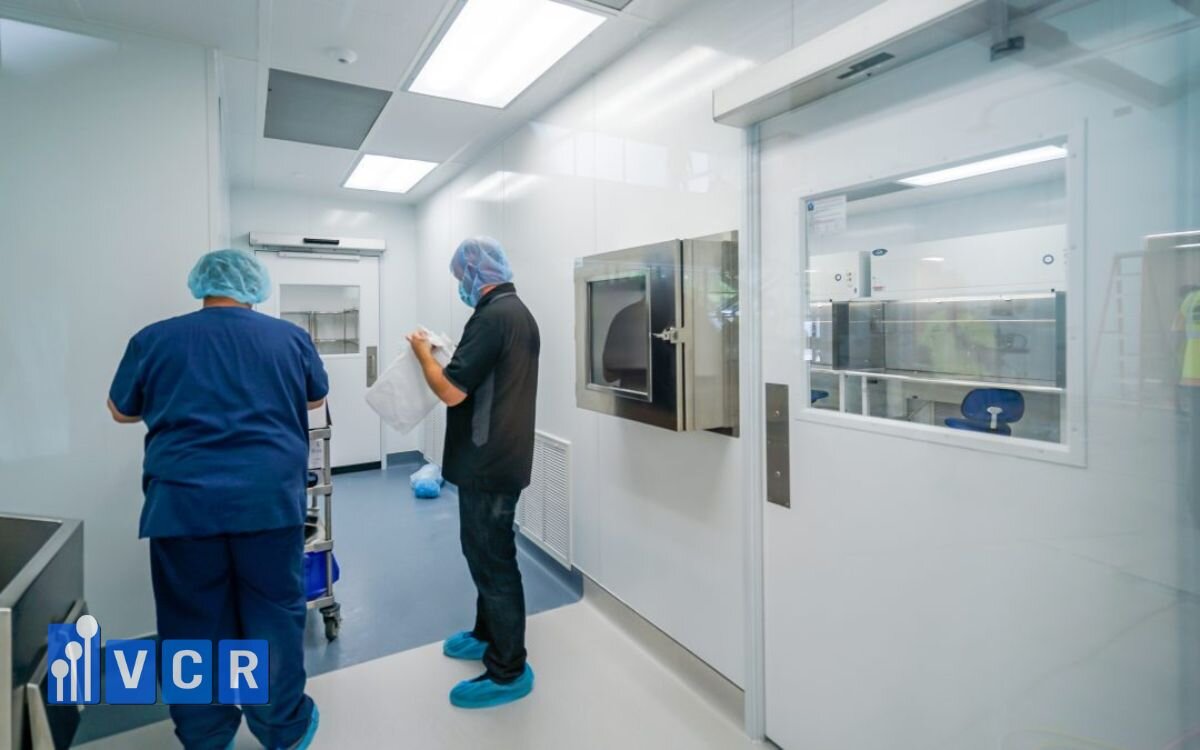
3. Check sealing, durability, and operation
- The door must close completely with no visible light leakage.
- Rubber gaskets should be intact and properly aligned.
- Hinges or tracks must allow smooth and stable operation without jamming.
4. Verify system integration
- The door’s lead layer must align seamlessly with walls and any adjacent shielding.
- The entire room (walls, door, lead glass) must meet consistent shielding standards.
Suggested acceptance procedure:
- Compare design drawings with the installed door.
- Conduct radiation leakage tests.
- Prepare an acceptance report signed by the contractor, supervisor, and radiation safety authority.
See more: Expert Guide to Cleanroom Steel Door Installation
5. Practical Applications - Where Are Lead Doors Used?
Lead doors are mandatory in medical environments where ionizing radiation equipment such as X-rays, gamma rays, or strong electromagnetic fields are used. Depending on the equipment's power and diagnostic purpose, the door type and technical requirements may vary.
Below are the most common practical applications of lead doors:
1. Digital X-ray rooms (DR/CR)
- Recommended door type: single-leaf hinged door with 1.5-2.0 mm lead layer.
- Requirements:
- Manual or sensor-assisted door opening.
- Radiation warning lights and signage installed outside.
2. CT Scanner rooms
- Door type: automatic sliding door with ≥ 2 mm lead.
- Requirements:
- Large room size and high foot traffic.
- Interlocked with the CT machine to prevent door opening during exposure.
- Equipped with motion sensors for touchless operation.
3. Dental X-ray rooms
- Door type: lightweight hinged door with 1-1.5 mm lead.
- Features:
- Compact room design with short imaging duration.
- Simple lead doors are acceptable but must meet radiation shielding standards.
4. Certain MRI rooms - with radiation and EMI shielding
- Although MRI does not emit ionizing radiation, some hybrid systems (e.g., MRI with PET/CT) include X-ray components.
- Additional shielding required: EMI/RF shielding against electromagnetic interference.
- Door type: automatic sliding doors with stainless steel or copper-coated surfaces.
5. Lead doors with extended functionalities
Modern healthcare and industrial facilities are investing in multi-functional lead doors for enhanced safety and automation:
|
Extended Function |
Description |
|
Interlock |
Prevents door opening while radiation is active |
|
Presence Sensor |
Automatically opens/closes door without physical contact |
|
Radiation Warning Light |
Alerts staff when X-ray exposure is in progress |
|
Smart Magnetic Lock |
Prevents unauthorized access, remotely controllable |
See more: Why Steel Doors Shine in Cleanroom Environments
6. Key Considerations When Selecting a Lead Door for Medical Facilities
Investing in a lead door is not only a legal obligation but also a decision that directly impacts long-term safety in X-ray rooms. To ensure proper installation and compliance, consider the following:
1. Choose a supplier with certified radiation compliance
Why this matters: Non-compliant doors may fail inspection, resulting in additional costs and delays.
Required documents:
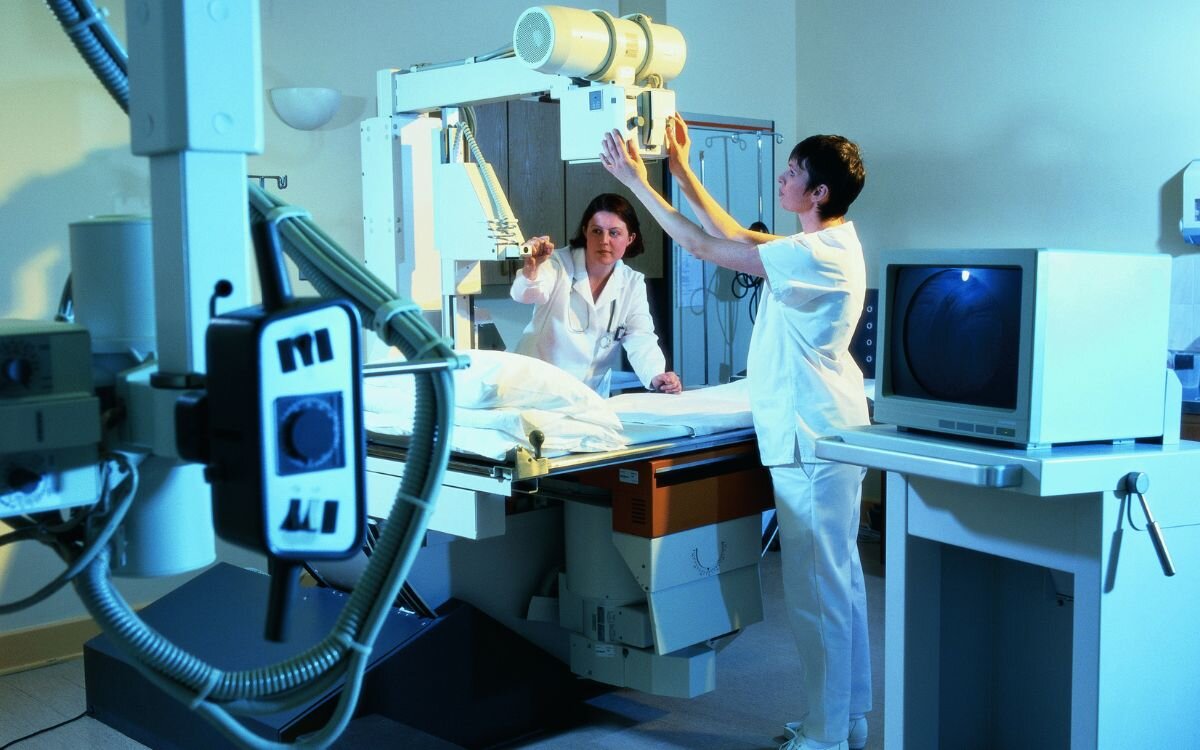
- Certification from a licensed radiation safety agency.
- Technical specs detailing lead composition and thickness.
2. Select the right door type based on installation location
|
Location/Use Case |
Recommended Door Type |
|
Small room, low usage |
Single-leaf hinged door, 1.5 mm lead |
|
High-traffic diagnostic room |
Automatic sliding door, ≥ 2 mm lead |
|
Sterile environments |
Inox 304 doors with easy-clean surfaces |
|
Narrow or confined areas |
Outward-opening or overhead sliding doors |
Note: Choosing the wrong door type can result in radiation leakage or operational inefficiency.
3. Work with providers offering design and installation support
Reason: Suppliers should understand:
- QCVN-compliant room design.
- Consistent shielding across doors, walls, and viewing windows.
- Integration with alarms, interlocks, and control systems.
Benefit:
- Saves time on documentation and approval.
- Reduces operational risks.
4. Avoid choosing based on price alone
Common risks:
- Inadequate lead thickness leading to inspection failure.
- Hinge misalignment or door warping after short usage.
- Poor sealing resulting in radiation leaks.
Recommendation: Always evaluate based on certifications, construction quality, warranty, and service capabilities-not just price.
7. Frequently Asked Questions About Lead Doors for X-ray Rooms
1. Are lead doors mandatory for X-ray rooms?
Yes. According to QCVN 5:2010/BKHCN, all X-ray rooms must be equipped with compliant lead doors to ensure the safety of healthcare workers, patients, and adjacent areas.
2. What is the standard lead thickness for doors?
Depending on the type and power of the X-ray machine, the lead thickness typically ranges from 1.5 mm to 3 mm. The most common specification for general X-ray rooms is 1.5-2.0 mm.
3. Should I choose a sliding or hinged lead door?
- Hinged doors are ideal for small rooms with lower foot traffic and cost.
- Sliding doors are better for large, busy areas and are suitable for automation and advanced features.
4. Do lead doors require official inspection?
Yes. Lead doors are a critical component of the shielding system and must be inspected along with the entire room before it can be officially used.
8. Need Professional Advice on Lead Doors for X-ray Rooms?
If you're planning to build or upgrade an X-ray room, contact VCR for comprehensive support:
- Custom consultation for selecting the right door based on your imaging system
- Integrated design with lead-lined walls and lead glass
- Full installation, acceptance testing, and inspection documentation
Hotline: 090.123.9008
Email: [email protected]
Website: https://cuaphongsachvcr.com/
Diep VCR




